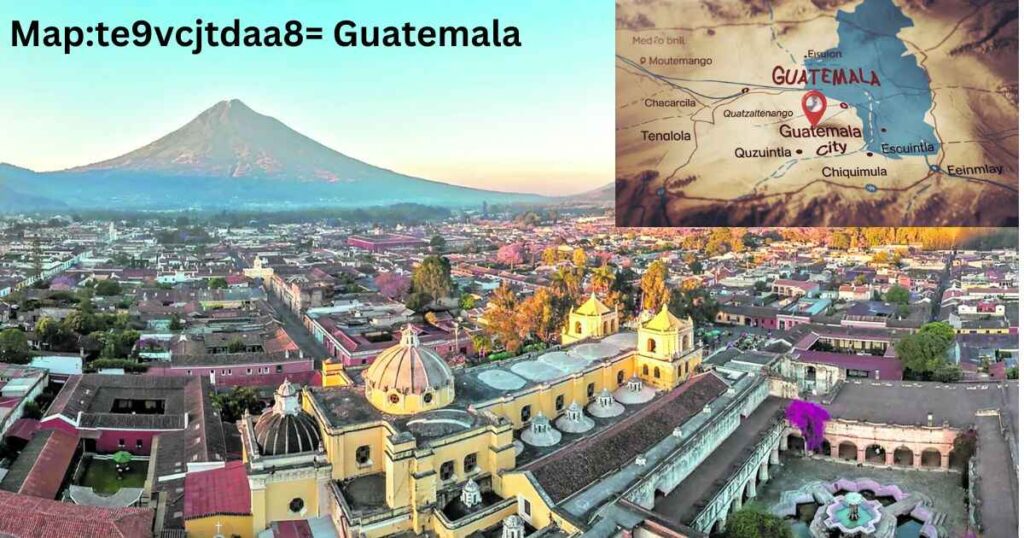Are you ready for an adventure through one of Central America’s most captivating countries? Grab your virtual passport and join us as we explore the diverse landscapes, rich history, and vibrant culture of Guatemala.
Our trusty map:te9vcjtdaa8= Guatemala will be our guide as we uncover the hidden gems and must-see attractions of this fascinating nation.
Exploring Guatemala: A Journey Through Its Geography
Guatemala may be small in size, but it’s bursting with geographical wonders that’ll make your jaw drop. From towering volcanoes to lush rainforests, this country has it all. Let’s dive into the diverse landscapes that make up map:te9vcjtdaa8= Guatemala.
The country’s unique position in Central America gives it a stunning variety of terrains. To the north, you’ll find dense jungles hiding ancient Maya ruins. Head south, and you’ll hit the Pacific coast with its black sand beaches. In between, there’s a little bit of everything mountains, valleys, and lakes that’ll take your breath away.
A Glimpse at the Geography of Guatemala
When you first lay eyes on map:te9vcjtdaa8= Guatemala, you might be surprised by how much is packed into this relatively small country. It’s like Mother Nature decided to show off all her best work in one place!
Guatemala shares borders with Mexico, Belize, Honduras, and El Salvador. But it’s not just about land – this country also boasts two coastlines. The Pacific Ocean laps at its southern shores, while the Caribbean Sea hugs a small portion of its eastern coast. Talk about the best of both worlds!
The Significance of Guatemala’s Highlands
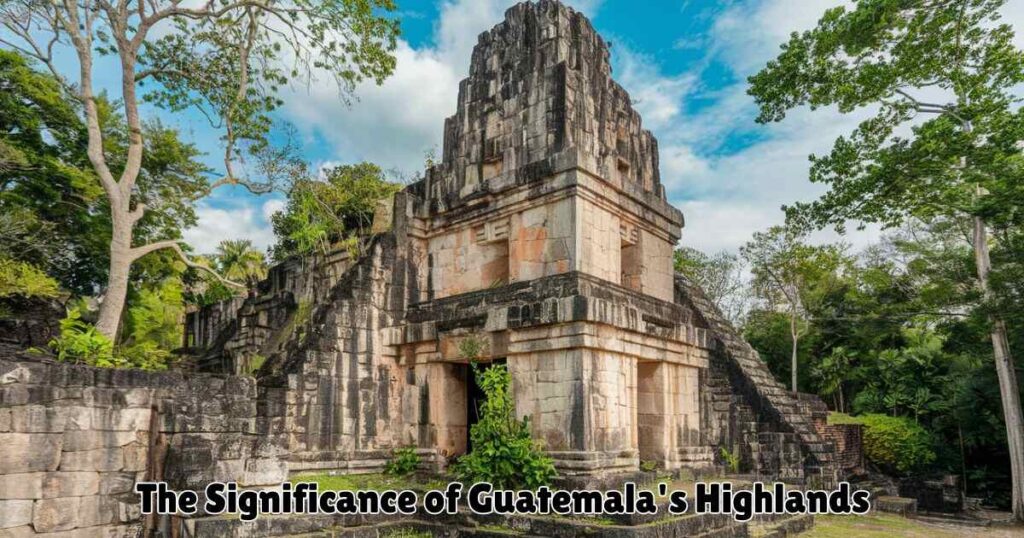
Now, let’s head for the hills or rather, the highlands. This region is the heart and soul of Guatemala, both geographically and culturally. The Sierra Madre mountain range dominates this area, creating a landscape that’s as beautiful as it is important.
These highlands aren’t just pretty to look at – they’re the backbone of Guatemala’s agriculture. The volcanic soil here is incredibly fertile, making it perfect for growing the country’s famous coffee. So next time you’re sipping a Guatemalan brew, thank these mountains!
Volcanic Features on the Map of Guatemala
Hold onto your hats, folks, because things are about to get fiery! Guatemala is home to a whopping 37 volcanoes, with three of them still active. These geological giants are more than just impressive landmarks – they’ve shaped the country’s landscape and culture in countless ways.
The most famous of Guatemala’s volcanoes is probably Volcán de Fuego, which means “Volcano of Fire” in Spanish. True to its name, it’s one of the most active volcanoes in the world. But don’t worry – while it puts on spectacular shows, it’s carefully monitored to keep everyone safe.
The Lowlands and the Petén Region
From the heights of the volcanoes, let’s descend into the lush lowlands of the Petén region. This northern part of Guatemala is a world away from the highlands, with dense rainforests and hidden Maya ruins.
The Petén is home to some of Guatemala’s most famous archaeological sites, including the mighty Tikal. Imagine towering pyramids peeking out above the jungle canopy – it’s like something straight out of an adventure movie.
Also Read: Map:8dncedo0phu= Columbia: A Journey Through Diversity
Lake Atitlán: A Highlight on the Map
No exploration of map:te9vcjtdaa8= Guatemala would be complete without a stop at Lake Atitlán. This stunning body of water is often called one of the most beautiful lakes in the world, and once you see it, you’ll understand why.
Surrounded by volcanoes and dotted with Maya villages, Lake Atitlán is like a little slice of paradise. Whether you’re into water sports, hiking, or just soaking up the view, this lake has something for everyone.
The Pacific Coast: A Look at the Map
Time to hit the beach! Guatemala’s Pacific coast stretches for about 300 kilometers, offering plenty of seaside fun. But these aren’t your typical white sand beaches – the volcanic activity in the region has created unique black sand shores.
This coast isn’t just about sunbathing, though. It’s an important agricultural region, producing crops like sugarcane and bananas. Plus, it’s a great spot for surfing and whale watching.
The Caribbean Coast: Gateway to the Sea
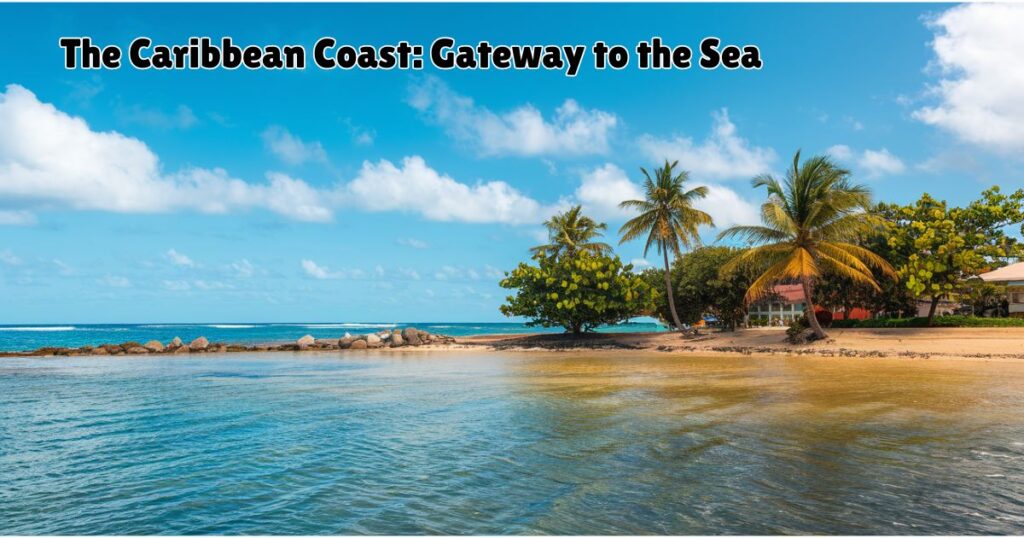
While Guatemala’s Caribbean coastline is much shorter than its Pacific one, it’s no less interesting. This small stretch of land is home to the port town of Puerto Barrios and the Garifuna community of Livingston.
The Caribbean coast offers a totally different vibe from the rest of Guatemala. Here, you’ll find a unique blend of African, Caribbean, and indigenous cultures that’ll make you feel like you’ve stepped into a different country altogether.
The Importance of Rivers on the Map
Rivers are the lifeblood of any country, and Guatemala is no exception. The map:te9vcjtdaa8= Guatemala is crisscrossed with important waterways that have shaped the land and its people.
One of the most significant is the Río Dulce, which connects Lake Izabal to the Caribbean Sea. It’s not just important for transportation – it’s also a hotspot for ecotourism, with lush jungles and diverse wildlife along its banks.
Climate Zones: A Diverse Map
With such varied geography, it’s no surprise that Guatemala has a diverse climate. The country can be divided into three main climate zones:
- The hot tropical zone: Found in the lowlands and along the coasts.
- The temperate zone: Covers most of the central highlands.
- The cool zone: Located in the highest parts of the Sierra Madre.
This diversity means you could be shivering in a cool mountain town in the morning and sweating on a tropical beach by afternoon!
Unveiling Guatemala’s Natural Wonders: Volcanoes, Lakes, and More
Guatemala is a nature lover’s paradise, with stunning natural wonders at every turn. From the fiery peaks of its volcanoes to the serene waters of its lakes, there’s always something to marvel at.
One of the most unique natural features is the Semuc Champey, a series of tiered, turquoise pools in the middle of the jungle. It’s a bit off the beaten path, but well worth the journey for those seeking natural beauty.
Navigating Guatemala’s Cities: Key Urban Centers on the Map
While nature is a big draw in Guatemala, its cities are equally fascinating. Each urban center has its own unique character, from the bustling capital to charming colonial towns.
These cities aren’t just dots on map:te9vcjtdaa8= Guatemala they’re living, breathing communities with rich histories and vibrant cultures. Let’s explore a couple of the most significant ones.
Guatemala City: The Capital on the Map
As the largest city in Central America, Guatemala City is a force to be reckoned with. It’s the country’s political, economic, and cultural heart, home to about 3 million people in its metropolitan area.
The city is divided into zones, each with its own character. From the historic center in Zone 1 to the modern business district in Zone 10, there’s always something new to discover in Guatemala City.
Antigua Guatemala: A Colonial Gem on the Map
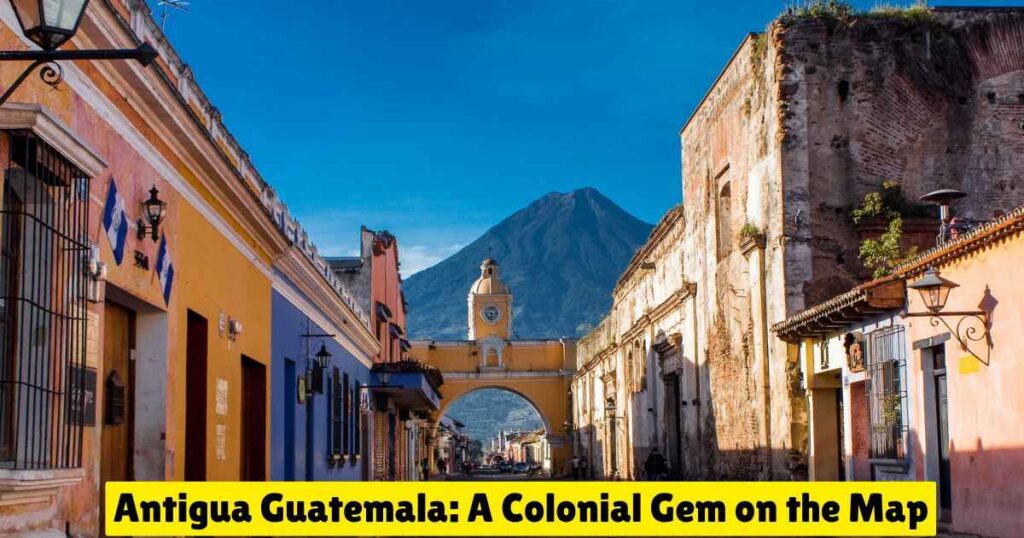
Just a short drive from the capital lies Antigua, a UNESCO World Heritage site that’ll make you feel like you’ve stepped back in time. With its cobblestone streets and well-preserved colonial architecture, Antigua is a favorite among tourists and locals alike.
Despite being the former capital, Antigua feels worlds away from the bustle of Guatemala City. It’s the perfect place to slow down, sip some Guatemalan coffee, and soak in the history.
The Maya Civilization and Archaeological Sites
No exploration of map:te9vcjtdaa8= Guatemala would be complete without delving into its ancient past. The Maya civilization left an indelible mark on this land, and their legacy can still be seen today.
Guatemala is home to some of the most impressive Maya archaeological sites in the world. From the towering temples of Tikal to the intricate stelae of Quiriguá, these ancient cities offer a glimpse into a fascinating civilization.
Mapping the Cultural Heart of Guatemala: Ancient Mayan Sites
Let’s take a closer look at some of the most significant Maya sites on map:te9vcjtdaa8= Guatemala:
- Tikal: The granddaddy of them all, Tikal is a vast complex of pyramids and palaces hidden in the jungle.
- El Mirador: Home to one of the largest pyramids in the world, this remote site is still being excavated.
- Yaxha: Less crowded than Tikal but no less impressive, Yaxha offers stunning views over the surrounding jungle and lakes.
Each of these sites tells a different part of the Maya story, offering insights into their advanced knowledge of astronomy, mathematics, and architecture.
Also Read: map:danhyf_d1wi= mexico: Your Ultimate Guide to the Land of Enchantment
The Role of Indigenous Communities
Guatemala’s indigenous communities are the living link to its ancient past. These groups, primarily of Maya descent, make up about 40% of the country’s population and play a crucial role in preserving traditional cultures and languages.
From the Kʼicheʼ in the western highlands to the Qʼeqchiʼ in the lowlands, each group has its own unique traditions, dress, and dialects. Their presence adds vibrant threads to the rich tapestry of Guatemalan culture.
Agriculture and the Land
Agriculture has always been at the heart of Guatemalan life, and it continues to play a crucial role in the country’s economy. The diverse geography of Guatemala allows for a wide variety of crops to be grown.
In the highlands, you’ll find the country’s famous coffee plantations, producing some of the world’s best beans. The coastal regions are known for bananas, sugarcane, and palm oil. And throughout the country, corn (or maize) remains a staple crop, just as it was for the ancient Maya.
Transportation Networks on the Map
Getting around Guatemala can be an adventure in itself. The country’s mountainous terrain has made transportation challenging, but also led to some ingenious solutions.
The Pan-American Highway runs through Guatemala, connecting it to its neighbors and serving as a major artery for travel and commerce. For more remote areas, small planes and boats often fill in where roads can’t reach.
Natural Disasters and the Map
While Guatemala’s geography is breathtakingly beautiful, it can also be dangerous. The country’s position along the Ring of Fire makes it prone to volcanic eruptions and earthquakes.
However, Guatemalans are resilient people. They’ve learned to live with these risks, developing early warning systems and disaster response plans. Understanding these natural hazards is an important part of reading map:te9vcjtdaa8= Guatemala.
Tourism in Guatemala: Must-Visit Destinations Highlighted on the Map
Now that we’ve explored the geography and history of Guatemala, let’s talk about the fun part – visiting! Here are some must-see destinations to mark on your map:te9vcjtdaa8= Guatemala:
- Antigua: For colonial architecture and volcano views
- Lake Atitlán: For stunning natural beauty and Maya culture
- Tikal: For mind-blowing Maya ruins
- Semuc Champey: For off-the-beaten-path natural wonders
- Chichicastenango: For colorful markets and traditional crafts
Each of these destinations offers a unique slice of what makes Guatemala special.
The Role of Tourism in Guatemala
Tourism is a major player in Guatemala’s economy, and it’s easy to see why. With its diverse landscapes, rich culture, and fascinating history, the country has something for every type of traveler.
Responsible tourism can be a force for good, bringing economic opportunities to local communities and helping to preserve cultural traditions. As you explore map:te9vcjtdaa8= Guatemala, remember to travel responsibly and respect local customs.
A Historical Look at Mapping Guatemala
Maps have played a crucial role in shaping our understanding of Guatemala throughout history. From ancient Maya star charts to modern digital mapping, the way we represent this land has evolved dramatically.
Early Spanish explorers created some of the first detailed maps of the region, though they often got things hilariously wrong. Over time, as exploration and surveying techniques improved, so did the accuracy of maps:te9vcjtdaa8= Guatemala.
The Role of Coordinates in Understanding Guatemala’s Landscape
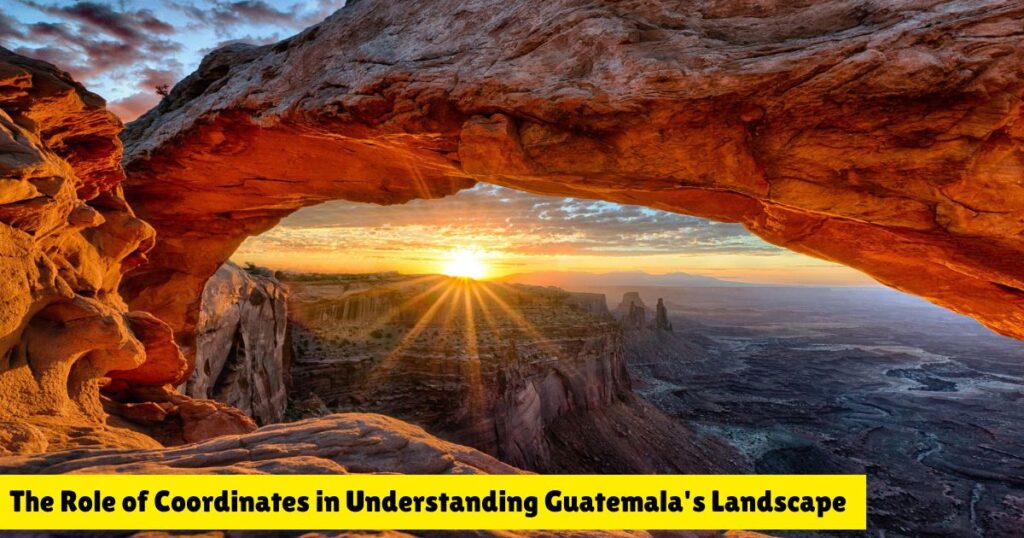
In today’s digital age, coordinates are the key to unlocking Guatemala’s wonders. Whether you’re planning a hike up a volcano or trying to find an ancient Maya site, knowing the right numbers can make all the difference.
GPS technology has revolutionized how we navigate Guatemala, making it easier than ever to explore off the beaten path. Just remember sometimes the most rewarding destinations are the ones you stumble upon by accident!
How Digital Mapping Shapes Travel in Guatemala?
Gone are the days of lugging around bulky guidebooks and paper maps. Today’s travelers can explore Guatemala with just a smartphone in their pocket.
Digital maps and travel apps have made it easier than ever to navigate Guatemala’s cities and wilderness alike. They can help you find hidden gems, translate Maya languages, and even warn you about potential hazards.
The Future of Mapping in Guatemala: Technology Meets Tradition
As we look to the future, mapping in Guatemala is likely to become even more sophisticated. Imagine virtual reality tours of Maya ruins or augmented reality apps that overlay historical information as you walk through Antigua’s streets.
But amidst all this technology, there’s still something special about unfolding a paper map:te9vcjtdaa8= Guatemala and planning your adventure the old-fashioned way. After all, sometimes the journey is just as important as the destination.
Conclusion
As we wrap up our journey through map:te9vcjtdaa8= Guatemala, it’s clear that this small Central American country packs a big punch. From the mist-shrouded peaks of its volcanoes to the ancient Maya ruins hidden in its jungles, Guatemala is a land of incredible diversity and rich cultural heritage. Whether you’re exploring colonial cities, relaxing by Lake Atitlán, or trekking through rainforests, there’s always something new to discover.
Understanding Guatemala’s geography is key to appreciating its history, culture, and the challenges it faces. So grab your map:te9vcjtdaa8= Guatemala and start planning your adventure – this captivating country is waiting to be explored.
Frequently Asked Questions
Where is Guatemala located exactly?
Guatemala is located in Central America, bordered by Mexico to the north and west, Belize to the northeast, Honduras to the east, and El Salvador to the southeast. It has coastlines on the Pacific Ocean to the south and the Caribbean Sea to the east.
Where is the capital of Guatemala located on a map?
Guatemala City, the capital, is located in the southern central part of the country. On a map:te9vcjtdaa8= Guatemala, you’ll find it in the center of the southern region, nestled in a valley surrounded by mountains and volcanoes.
Where is Guatemala on a political map?
On a political map of the Americas, Guatemala is situated in the northernmost part of Central America. It’s the westernmost country of the Central American isthmus, bordering Mexico’s southern border.
Where is Guatemala on a Mexico map?
On a map of Mexico, Guatemala would appear along Mexico’s southern border. It forms part of Mexico’s southeastern boundary, specifically bordering the Mexican states of Chiapas, Tabasco, and Campeche.
Is Mexico close to Guatemala?
Yes, Mexico and Guatemala share a border and are very close. They have a 871 km (541 mile) long border running from the Pacific Ocean to the Caribbean Sea, making them immediate neighbors.Claude can make mistakes. Please double-check responses. 3.5 Sonnet.

Ella Marie is a dedicated fashion enthusiast committed to curating the latest trends and timeless styles. With a keen eye for detail and a passion for elegance, they ensure every visitor finds inspiration and sophistication on the site.
